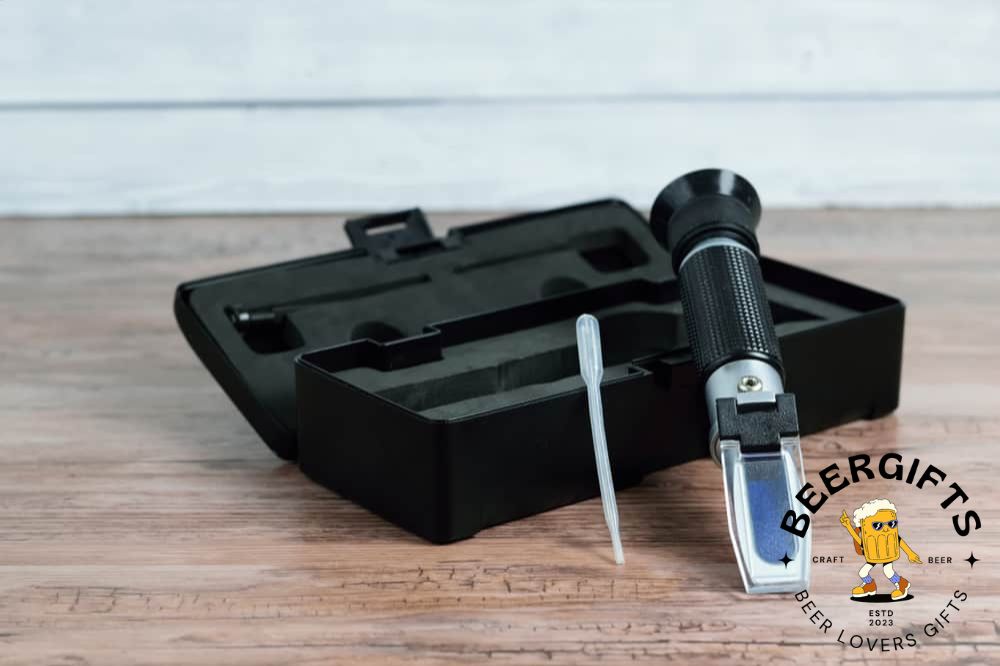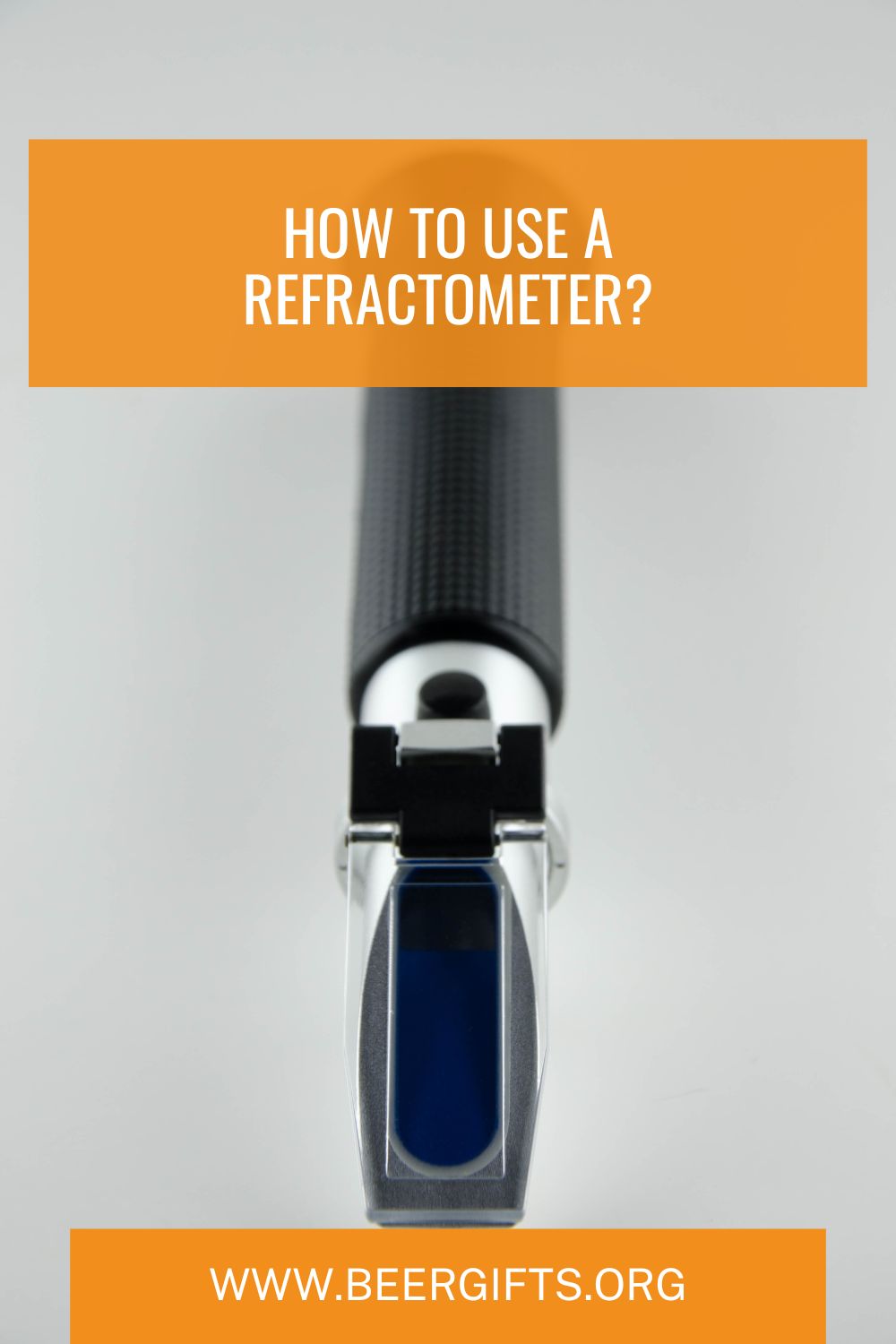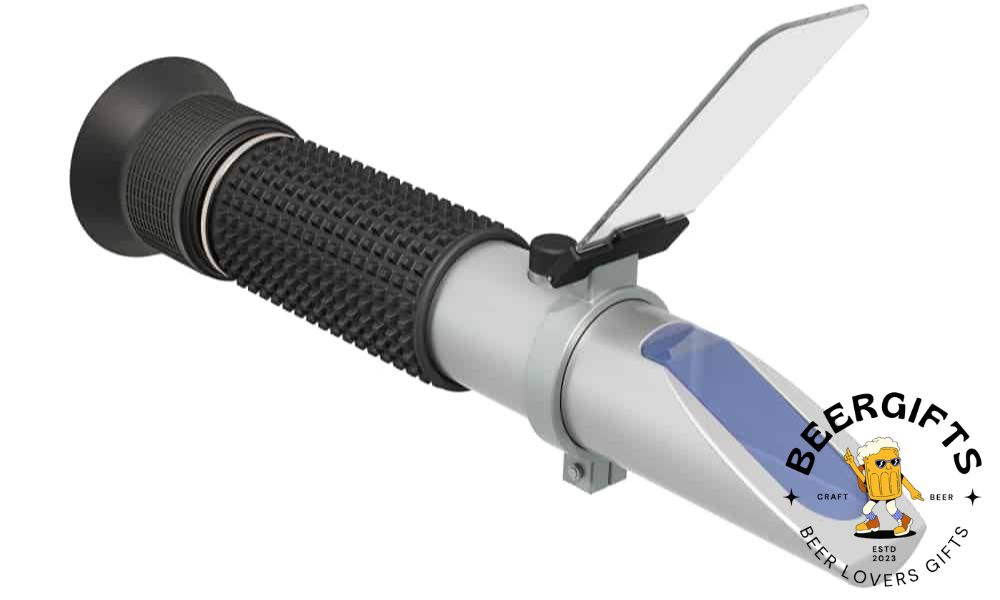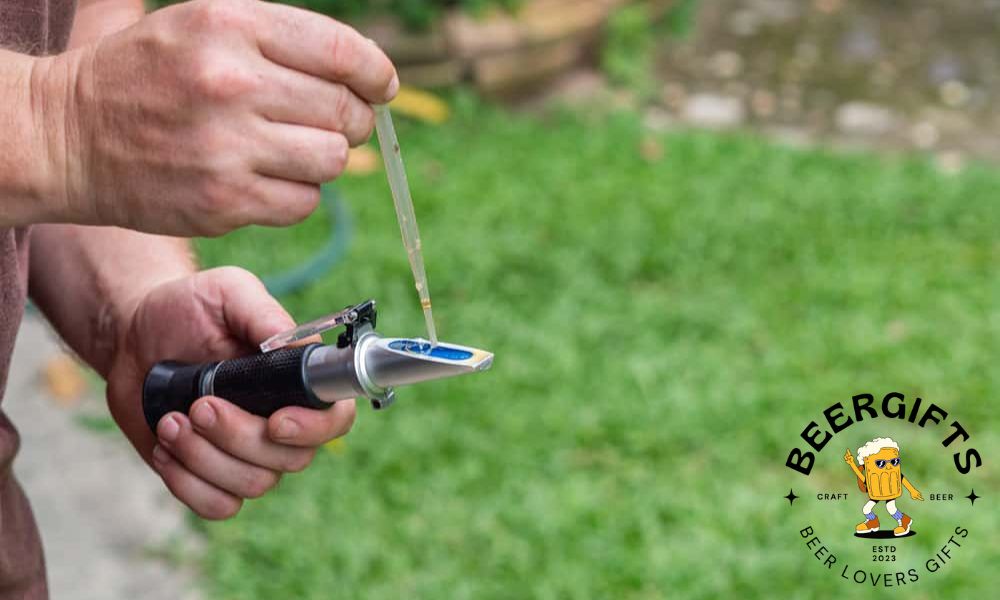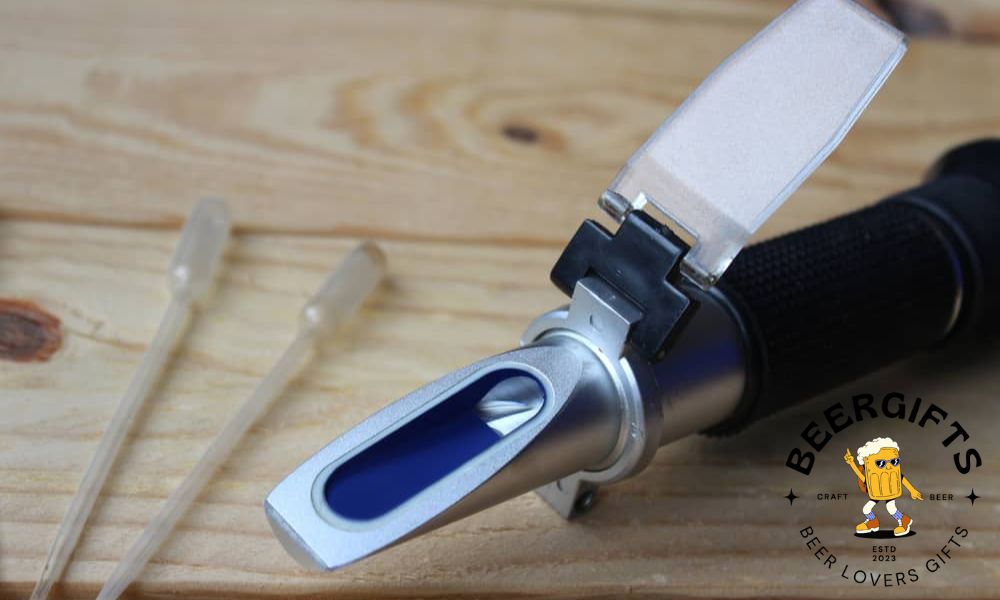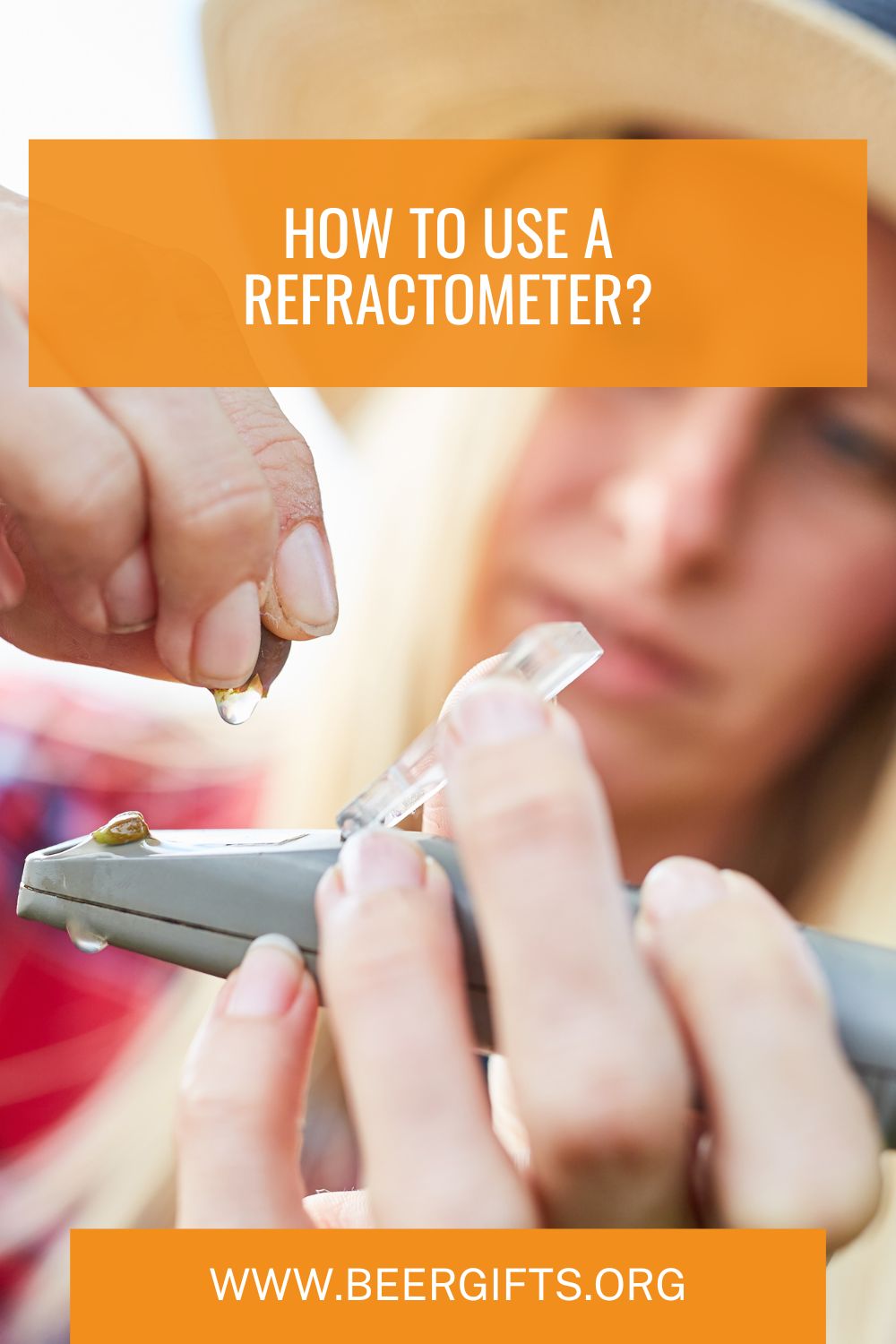Brewing quality beer is an impossible task without the proper equipment. Most wineries and breweries use the refractometer for decades. However, this optical tool is almost unknown among small distilleries and homebrewers.
If you make your beer, you will need to know how to use a refractometer and how it differs from other similar instruments. Let’s see.
What is a Refractometer?
A refractometer is an optical instrument, meaning it works based on the refraction of light. You can use it to measure and control sugar content during brewing.
Some refractometers read the Brix scale results, while others measure specific gravity, depending on the apparatus type and model. You can quickly convert one value to another when necessary, regardless of the model you use.
Refractometer Types
There are four basic refractometer types:
- Portable – That is the most common type, also known as a handheld refractometer. This tool measures up to 95% Brix, but it is sensitive to high temperatures. You can also find a digital version that is more precise and quicker than manual models.
- Automatic – You can connect this refractometer with other devices to combine Brix and PH value or density, for example. Typically, that is a desktop tool, but you can also find a handheld model on the market.
- Abbe lab – Named after inventor Ernst Abbe, this lab refractometer includes a microscope and a specific mirror. The goal is to reflect light with maximum precision. Many mass-production breweries use it because it efficiently reduces the possibility of error.
- Intine – This refractometer type measures both sugar content and temperature of the sample you want to check. It contains a control box, so you can precisely compare results during fermentation.
Brix and Gravity Calculation
Beer brewing converts sugars from the mixture into alcohol and carbon dioxide. You can determine how high is the alcohol level by controlling the sugar content in the liquid.
Therefore, you need a refractometer to determine the strength of your beer during production. The higher the alcohol percentage, the stronger the beer. Plus, you can adjust the recipe on the spot by adding yeast or some other desired ingredient.
A refractometer determines the Brix value in degrees. You will get beer ABV (alcohol by volume) if you multiply the number obtained by 0.59 on average. For example, a beer with 9% Brix value contains 5.31 ABV.
A conversion multiplier is variable during the fermentation process and varies between 0.55 to 0.65. That means you should taste several samples during production if you have an analog, handheld refractometer.
Some refractometers determine RI (refraction index), which value differs from a Brix number. In such a case, you will need an online gravity calculator to avoid doing the math by yourself.
Luckily, there are many quality sites with this option that will make your job easier. Plus, you can use them to get the original and final gravity numbers.
Measure the Brix before starting fermentation and use the unfermented wort gravity equation. You should repeat the measurement during fermentation to get the final gravity number once the process is finished.
Refractometer Calibration
A refractometer is a sensitive instrument that you need to calibrate before each measurement to ensure its accuracy. Fortunately, calibration is an easy and quick process.
You need a few drops of distilled water. Take a refractometer, remove the sample plate called daylight, and put a sample on the instrument glass. Make sure there are no bubbles once you put the cap back on.
The distilled water sample needs to be at room temperature because many portable refractometers are sensitive to temperature changes. Lift the device towards daylight to read the sample value.
Once the device shows 0% Brix, calibration is complete. Then, you can use it to check beer samples. Be prepared to repeat the process a few times if you are not familiar with using the refractometer.
How to Use the Refractometer?
Using a refractometer is quite effortless process. Once you take a sample of your brew, check its temperature since it shouldn’t exceed 68 F (20 C). The reason is that most homebrewers use portable refractometers. These instruments are inaccurate and sensitive to temperature variation, so erroneous readings of sugar content are possible.
Step 1:
Don’t forget to calibrate the instrument before measuring the beer sample. Once you set it to zero degrees using distilled water, dry it well and put a few drops of brew on the glass. Remember that bubbles in the fluid can also lead to miscalculation.
Step 2:
Once you spread beer equally and close the capsule, make sure there are no leaks. Then, it is time to expose the refractometer to direct light. The light reflection angle through the instrument glass prism changes depending on the amount of sugar in the liquid.
Step 3:
Wait a few moments for the brew to stabilize and read the result by looking through the ocular lens viewer. You will see the Brix scale indexed by degrees. The light highlights the sample Brix value either by a clean line or coloring a screen part above the sample degree in blue. It primarily depends on an instrument model.
Step 4:
To be sure about the sugar content level in a sample, you should repeat the procedure once more. Clean the glass and check another sample. Both values should be the same. Write down the RI value and use the online calculator to get Brix and gravity index. For instance, RI for distilled water is 1.33.
Refractometer Maintenance
Although it is quite simple, a refractometer is a delicate instrument that will easily malfunction if you don’t maintain it properly. It will last for years if you:
- Store it in a cold, dry, and dark place
- Ensure temperature fluctuations don’t exceed 5 F (15 C)
- Clean it thoroughly after every use
- Calibrate it regularly
- Handle with care
A refractometer is a good but expensive investment. Although you get a manufacturer’s warranty when buying this device, you will need to pay for any repair costs due to improper handling. Store it in a safe place with all the documentation you have received at the time of purchase.
It is wise to take the instrument to a professional service once or twice a year. The experts can check the measurement accuracy and adequately clean and adjust it. Plus, you will likely get several useful pieces of advice on use and maintenance to prolong the lifetime of your device and ensure its maximum performance.
Pros and Cons
Some of the refractometer’s benefits are the speed of reading the Brix value and the small required sample. On the other hand, it is an expensive device and susceptible to temperature oscillations.
There are models with automatic temperature adjustment, but usually, only mass-production breweries can afford them. Their prices exceed the budget of most amateur homebrewers. Another problem is that the amount of sugar is drastically reduced during fermentation. In most cases, portable refractometers are inaccurate when measuring low Brix values.
Finally, you need a lot of math when using a refractometer. The obtained Brix value doesn’t show the beer strength, alcohol by volume, nor the original and final gravity. Basically, you have no other option than to use numerous calculations to get a clear picture of your beer quality.
Refractometer vs. Hydrometer
Some homebrewers use a hydrometer instead of a refractometer to measure their brew. Both devices have a similar purpose since the hydrometer measures beer relative density or specific gravity. Some features are different, but you can quickly convert one value to another.
- Volume – The average hydrometer has a cylinder volume of about 85 ounces (250 ml), while you need only a few drops to test brew with a refractometer. That means you waste a significant amount of beer by taking a few samples for gravity measurement.
- Ease- to-clean – Refractometer sanitation takes only a few seconds. Contrary, you need to empty the hydrometer cylinder and wash it thoroughly to avoid the contamination of the next sample.
- Additional equipment – When using a refractometer, you don’t need any other tool. On the other hand, a hydrometer requires a cylinder and a digital thermometer that you need to buy separately.
- Contamination risk – A bulky hydrometer cylinder can be too narrow, depending on the model, making it difficult to pour the sample. The cylinder stays open longer than the glass prism on the refractometer, and the possibility of contamination increases. Plus, many homebrewers put a hydrometer directly in a batch to avoid the hassle of sampling. That way, they risk all the beer become contaminated.
- Cost – A hydrometer is much more affordable than a refractometer. If you start a brewing business, you will want to save every dollar and avoid expensive investments. Plus, you need a device effective enough the novice homebrewer can use it.
Summary
A refractometer is a useful optical device that determines the sugar level in a liquid by refracting light through a glass prism. It is used by mass-production breweries but also by homebrewers.
The portable variant is not entirely reliable because it is sensitive to temperature. Maintain your device regularly and calibrate it before measuring to ensure accurate data.

